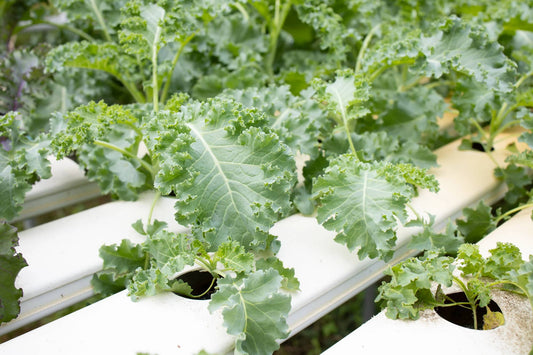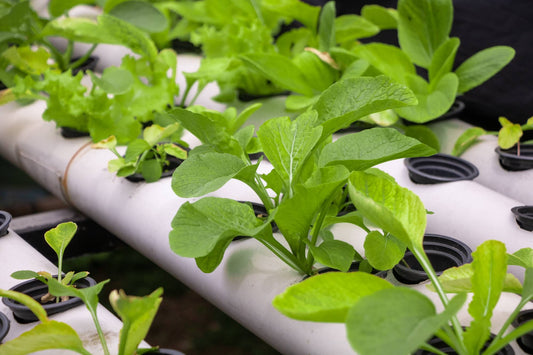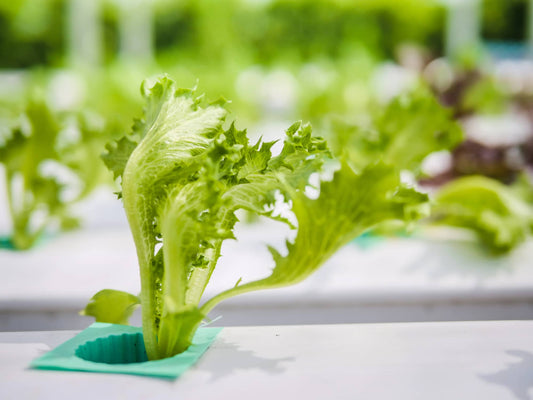Watermelon, the ultimate summer refreshment, can be successfully grown hydroponically, yielding large, sweet fruits in a controlled environment. Unlike traditional soil farming, hydroponic cultivation offers faster growth, better water efficiency, and optimal nutrient delivery, resulting in superior fruit quality. Whether grown in a greenhouse or an indoor setup, hydroponic watermelons provide gardeners the ability to enjoy homegrown, flavorful melons throughout the year. This guide covers the key factors for success, from planting and nutrient requirements to trellising techniques and harvesting.
Health Benefits of Hydroponic Watermelon
- Muscle Health – Watermelon contains citrulline, an amino acid that improves exercise performance and reduces muscle soreness, making it beneficial for physical recovery.
- Full of Antioxidants – Lycopene, vitamin C, and beta-carotene in watermelon provide strong antioxidant properties that combat oxidative stress and inflammation.
- Heart Health – The high levels of lycopene and potassium help lower blood pressure and cholesterol, supporting cardiovascular wellness.
- Skin Health & Hydration – With a high water content, watermelon helps maintain hydration, supports skin elasticity, and promotes overall skin health.
Growing Hydroponic Watermelon: A Step-by-Step Guide
Watermelon Growth Stages
- Germination – Takes between 3–10 days with warm temperatures and adequate moisture.
- Seedling to Mature Plant – Requires 20–30 days as plants establish strong vine growth.
- Flowering and Fruit Development – Occurs 60–85 days after planting, leading to fruit formation.
- Harvest – Begins between 70–100 days from seeding, depending on variety and ripening conditions.
Environmental Conditions for Maximum Yield
- Planting Season: While hydroponics allows year-round watermelon cultivation, planting in late spring to early summer mimics natural growing conditions for optimal results.
- Temperature: Maintain daytime temperatures between 70°F to 85°F (21°C to 29°C) and nighttime temperatures of 60°F to 70°F (15°C to 21°C).
- Humidity: A relative humidity between 60% and 70% is optimal for reducing plant stress and enhancing pollination success.
- Light Requirements: Watermelon plants need 8 to 10 hours of direct sunlight each day. For indoor hydroponics, offer a DLI range of 20 to 24 mol/m²/day to promote vine growth and fruit development.
Essential Nutrient and pH Levels
Recommended EC Levels:
- Seedling Stage: Start at 2.0 mS/cm to promote strong early growth.
- Vegetative Growth: Increase to 2.5 mS/cm as vines expand and leaf formation strengthens.
- Fruiting Stage: Adjust EC to 3.0–3.5 mS/cm to enhance fruit size, sweetness, and overall plant health.
pH Range:
- Maintain a slightly acidic pH between 5.5 and 6.0 for optimal nutrient absorption.
Key Practices for Thriving Hydroponic Watermelon
Use of Trellises: Support vines with trellises to enhance air circulation, maximize light exposure, and prevent fruit rot by keeping melons off the ground.
Fruit Support: Given the weight of watermelons, additional support such as slings or nets is recommended to cradle developing fruits and avoid stem damage.
Pruning Strategy: Remove excess foliage and non-fruiting flowers to focus the plant's energy on producing fewer but larger, sweeter melons.
Ensuring Proper Pollination
Watermelons require manual pollination in indoor hydroponic environments. It is crucial to identify male flowers (which are more plentiful) and female flowers (distinguished by a thick base), and to transfer pollen using a soft brush or cotton swab.
Popular Hydroponic Watermelon Varieties
- Seedless – A modern hybrid with no seeds, offering sweet and crisp flesh.
- Picnic – Large-sized, classic watermelons perfect for family servings.
- Icebox – Small, round watermelons ideal for personal consumption.
- Yellow/Orange – Unique varieties with a golden hue and a sweeter, honey-like taste.
- Personal – Compact and flavorful, designed for single servings.
- Carolina Cross – A giant watermelon variety known for its enormous fruit size.
Final Thoughts on Growing Hydroponic Watermelon
Hydroponic watermelon cultivation offers an efficient method for producing large, sweet, and juicy melons without the limitations of soil farming. By optimizing temperature, humidity, light exposure, and nutrient management, growers can ensure a consistent supply of high-quality watermelons. With suitable support structures, pruning, and pollination techniques, hydroponic systems present an excellent approach to cultivating this refreshing fruit year-round.




